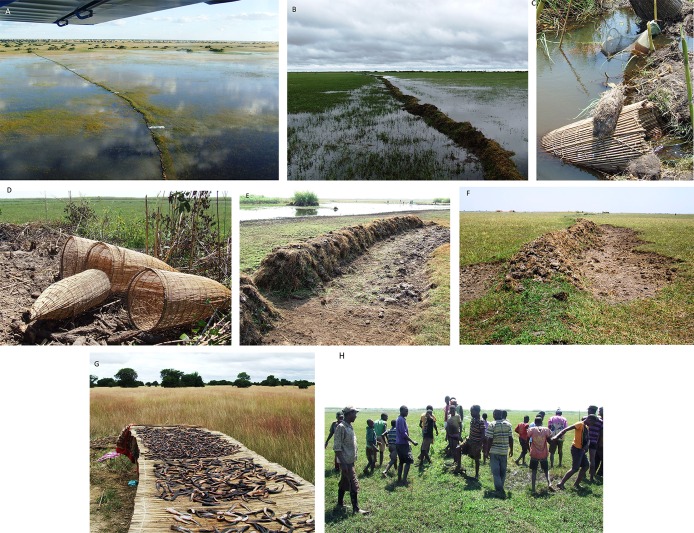Fig. S6.
Construction, maintenance, and use of earthen weirs in the Bangweulu weir fishery. (A and B) Weirs in action. (A) A long weir set with mosquito-net traps, seen from the air. (B) Weir showing the slightly deeper passageway for canoes on one side. (C and D) Types of traps placed at fishways. (C) A mono basket trap (traditional) and a mosquito-net trap (modern gear). (D) Mono baskets before the addition of trap valve. (E and F) Construction and maintenance of weirs. (E) A new weir, showing a newly constructed simple-gap fishway and the adjacent excavation channel. The height of new weirs can be up to 1.5 m. (F) An old weir maintained by the addition of new sods. (G) Fish harvested using weirs. Large numbers of fish, mostly juveniles, are captured during falling water in flooded savanna. (H) Cooperation and social coordination. A chipupila (center, with foot raised on an old weir) giving a “pep talk” to villagers preparing to begin work repairing an old weir. (All photographs Copyright 2011–2016, C.F.H.)

